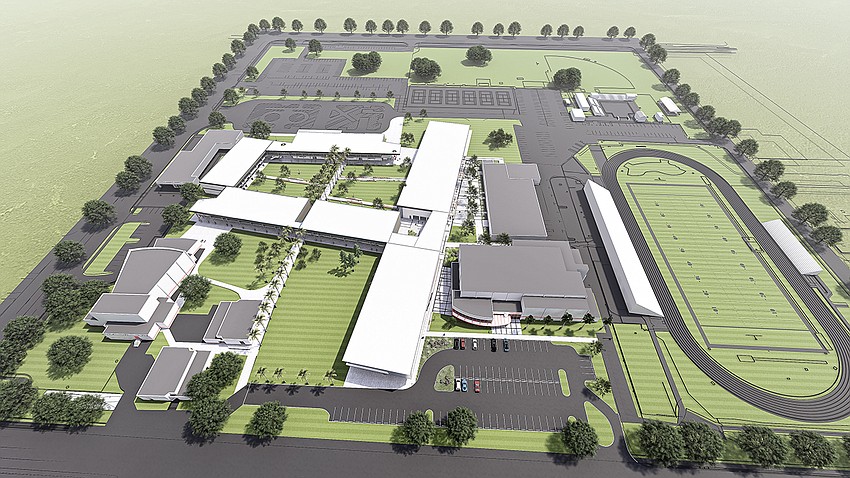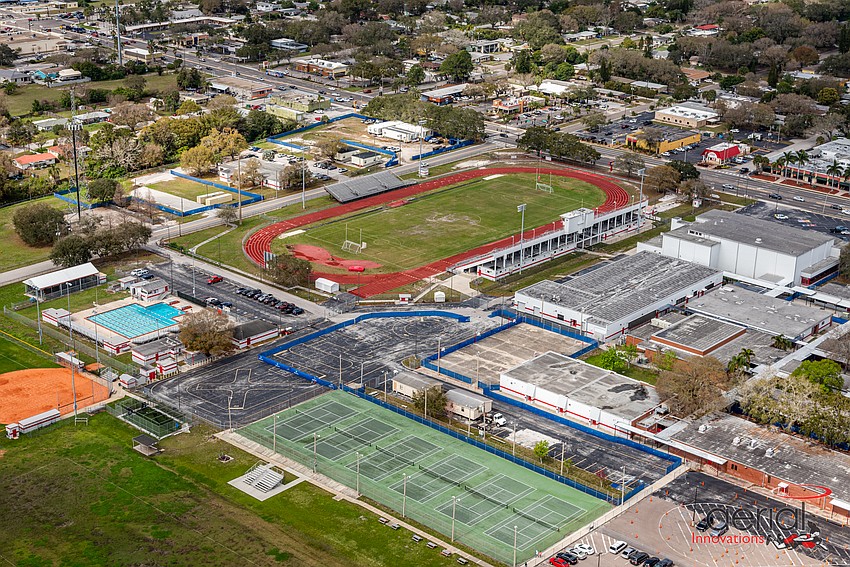- April 15, 2025
-
-
Loading

Loading

About 1,000 former students gathered at Clearwater High School on a February Saturday in 2020.
The students, some who’d graduated as far back as the 1950s, packed the school’s auditorium. This was Feb. 22, about three weeks before the world would shut down and the term social distancing would enter the lexicon.
The auditorium was packed tight, with a couple of hundred people standing in the back and along the aisles. Dozens more waited outside.
The former students were there to visit the school, as they’d known it, one last time.
Clearwater High, which opened on the current spot in 1954 and was already old when students attended in the 1980s, was about to undergo a massive $58.6 million reconstruction that would transform the 66-year-old, 276,920-square-foot school on Gulf-to-Bay into a modern campus.
The work that was needed was so extensive that the project’s lead, Curtis DeLaquil, senior project manager at JE Dunn Construction, says it may have been a easier to just build a brand-new school from scratch.
The school district had a couple of options of how to move forward, and officials decided to reconstruct the school, basically rebuilding the campus on the site of the existing campus. “They chose to do that because it would provide a better long-term investment, provide a long life for the new space,” DeLaquil says.
Clearwater High is far from alone when it comes to the need to upgrade. The National Council on School Facilities says local school districts and states nationwide spent an average of $49 billion a year on building projects between the fiscal years of 1994 and 2013. But, the Washington, D.C. organization says, that is $38 billion a year less than needed to keep up with demands.

Keeping up with the need is difficult. In Florida alone there are 3,687 traditional public schools and 740 charter schools according to the state’s Office of Program Policy Analysis and Government Accountability.
“It is effectively a competitive environment,” says DeLaquil, whose work at JE Dunn is focused on school projects. “You need a top-of-the-line facility to provide that environment for a top-of-the-line education and to attract teachers to the classrooms.”
Clearwater High construction officially kicked off with a ceremonial groundbreaking in early 2021, and work was completed in three phases. The project included the demolition of 17 buildings on the campus and construction of five two-story buildings and one single-story building. This meant a new administrative suite, cafeteria and media center for the school as well as new science labs and general and exceptional education classrooms.
JE Dunn also built a new central energy plant and remodeled the spaces belonging to several of the school’s programs. It did work on the football stadium and added a new synthetic turf for track and field and new floors, ceilings and light fixtures throughout the campus.

DeLaquil says much of the work was done while school was in session which “is incredibly challenging. Especially when you discover new things that nobody could have otherwise known. Then you have to modify your plan.”
To make it work, the district brought in portable classrooms and set up a makeshift campus in a rear parking lot. While that helped, students still had to walk through the school during the day in order to get to the media center, auditorium, cafeteria and gym. “There were students all around us,” he says.
Not only was this a challenge logistically, but there were inherent security and safety concerns as well.
To ensure safety, the crew set up a secure perimeter so students and construction workers avoided crossing paths. And when there was no other choice and the two had to mix, a manned double secure gate was set up and work was shut down between classes.
The work was completed in October — and how those 1,000 former students who visited on that February day three years ago feel about the change is anyone’s guess.
That day was for remembering. The former students wandered the halls — some in groups, others alone — visiting the library and classrooms and their old lockers, many for the first time since graduating, reliving their long-ago high school days.
“The school, as we know it, will never be exactly the same,” a post on the alumni association’s website said later that day. “Big, big changes are in the works.”
That, it turns out, was an understatement.